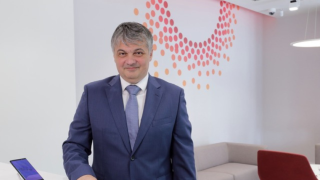Capacity spoke to Jean-Luc Vuillemin, executive vice president of international networks, Orange, about the new system and the company’s goings on in the sector.
The big question we asked was why? Why French Guiana, Martinique and Guadeloupe and what we the key driver for Orange?
“For one simple reason, at present we only have one cable connecting French Guiana, the Americas-II cable, and we now have another path which uses a complex set of existing cable systems,” explains Vuillemin.
The company has also just recently began rolling out mobile 4G services as well as fibre-to the-home (FTTH) in Guiana and as a result “we really needed a submarine cable to completely secure our traffic if one of the existing cables were cut”, he says.
From a data transit perspective, Martinique offers the opportunity to connect to lot of other submarine cable systems like Seabras-1 and the new route gives Orange the opportunity to offload some of its traffic to France rather than it all heading straight to the US.
Kanawa is a private cable completely owned by Orange, rather reminiscent of the more recent OTT cable projects that are built by a single entity. Though the system has been built specifically for the company’s needs Vuillemin notes that “if the capacity of the cable far exceeds our needs then it would be available for anyone to purchase”.
Despite the comparatively small population in the region, there is increasing data demands from its citizens, another contributing factor to the construction of the cable. Since the launch of 4G and FTTH Vuillemin says that the company’s bandwidth needs have increased by 30-40% each year.
Unsurprisingly Kanawa will land at cable landing stations across the three islands, but that’s because of the lack of data centres in the area. But Vuillemin notes that as the cable landing station versus data centre debate wages on, there is a clear difference between landing the data and landing the cable.
“Having a cable that goes straight onto a data centre in some circumstances can be not very effective. If for example you have your cable land at Virginia Beach and try to extend it terrestrially to Ashburn where most of the data centres are, this would lead to a huge decrease in capacity of each pair of your subsea cable,” he explains. “So it makes more sense in this case to land in Virginia Beach and then extend it by a separate backbone to Ashburn and then after that exchange the data in a data centre localised in Ashburn.”
Aside from Virginia, another key talking point from a data perspective is Asia. Though Vuillemin says he is unsure if Orange will consciously increase infrastructure in the region, he did hone in on the fact that gaming could be a big contributor of it and how Orange plans to tackle the problem.
“Gaming is a little bit like IoT in the sense that they both require subsea infrastructure with a very low latency,” he says. “As result, we are focusing on more direct routes cables and not designing as many with loop architectures as they are not as effective in terms of time transit.”
As carriers increasingly chase highly sought after partnerships with OTTs and slowly decrease their investment in subsea cable systems, Vuillemin shows that Orange is still moving full speed ahead. Whether the presence of OTTs in the market is a good or a bad thing – he can’t say but it is a fact that these collaborations are necessary.
“Over time what I see is that traditional operators are investing less and less in submarine cables,” explains Vuillemin. “For a company like Orange that has a huge international footprint with a lot of overseas territories, a lot of affiliates around the world and to whom subsea cables remain a critical part of their business. There is no other way for us, if we want to remain in this business, than to partner with OTTs.”
Most recently, Orange was named as the cable landing partner for Google’s Dunant cable system, connecting the US to the French Atlantic coast. As the French landing partner for the new system, Orange will build and operate the landing station on the French Atlantic Coast and provide backhaul service in Paris. Vuillemin confirms that the company will have two fibre- pairs on the system and over the coming months will “announce another partnership, with another OTT for another cable which will land in France and we will also have some optical pairs”.
Outside of the Orange’s home territory, he says that the company is also watching what is happening in China and “we have formed a partnership on the new PEACE cable”.
“We continue to believe that some capacity in our entire strategic footprint is important for Orange but as the new players are more OTTs we continue to work with them,” continues Vuillemin.
Beyond the Kanawa cable, Orange remains ever pre-occupied in the subsea space. It is investing in MainOne. An existing underused cable with some landing points in Africa. “We are going to completely regenerate the system with two new landing points in Senegal and Ivory Coast,” he explains.
Additionally, the company has purchased segment four of the ACE (African Coast to Europe) cable, which is due to be in service by 2019.
Most interestingly, the company has also set its sights on India and Vuillemin states that it will probably do something in the Indian Ocean and Orange are “considering our options there”, adding that it has just joined the consortium of SEA ME WE 6.






